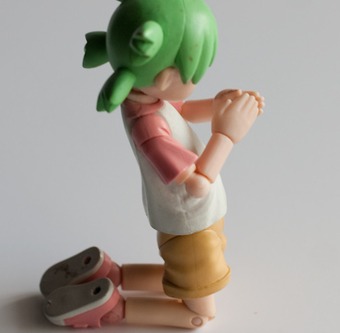
Liturgy
Fr Tim Finigan FAITH MAGAZINE January - February 2015
The Scylla and Charybdis of Participation
“The chalice of benediction that we bless, is it not a participation in the blood of Christ?” (1 Cor 10:16). In this earliest Christian teaching on liturgical participation, the word koinonia which St Paul uses can also be translated quite properly as “communion”. Such sharing in Christ’s being and action is at the heart of our participation in the sacred liturgy. It did not require each person to proclaim a reading, hold up a banner or do a dance; active participation in the divine work celebrated at the altar meant something deeper for St Paul, as indeed for the Fathers of the first five centuries of the life of the Church.
The liturgical scholarship of the past hundred years has uncovered some fascinating insights into the rites used in the early Church but these indications are often incidental to the principal concern of the Fathers, which was to affirm that the Eucharist was the perfect sacrifice prophesied by Malachi, to emphasise the awesome mystery of the sacred action, and to exhort the faithful to approach it with a clear conscience.
The attitude of modern liturgists to the Middle Ages has been heavily influenced by Jungmann, who said in his seminal work on the Mass that “scholastic theology produced nothing for the liturgy of the Mass or for a better understanding of it”. One wonders if he was familiar with the explanation of St Thomas Aquinas in the Summa Theologica of how the parts of the priest and people relate to each other, and how the people should participate in each element of the rite of Mass (3a q.84. art.6). As Eamon Duffy has demonstrated with reference to England, there was considerable, popular, active and devoted participation at many levels in the celebration of the Mass, the office and the sacraments.
The Counter-Reformation and baroque era is also dismissed routinely as though the people were simply an audience at a theatre, yet the spiritual writers of this period were intensely concerned to assist the people in participating in the sacred liturgy. A good example is found in the instructions of St Francis de Sales on how to hear holy Mass.
The focus of such participation did tend to minimise the use of the liturgical texts themselves, just as popular hymns today in most places overlay the texts of the propers of the Mass. The saintly Dom Guéranger with his L’Année Liturgique, and subsequent writers such as Pius Parsch, provided a healthy counterpoint to this tendency by instructing the laity on the texts of the liturgy themselves.
It was St Pius X who coined the expression “active participation”. He did so in the Instruction on Sacred Music Tra le Sollecitudini of 1903, which was written in Italian. Writers for whom I have the greatest respect are, in my view, mistaken to attempt to translate the expression actuosa participatio as “genuine participation” or some similar alternative. Partecipazione attiva means active participation. St Pius X was concerned to restore Gregorian chant to the liturgy and to foster the active participation of the people in the chant. This concern was repeated in the second Vatican Council’s Constitution on the Sacred Liturgy, Sacrosanctum Concilium (SC), when the Fathers urged that “steps should be taken so that the faithful may also be able to say or to sing together in Latin those parts of the Ordinary of the Mass which pertain to them” (SC 54).
The notion of active participation was widened greatly during the 20th century to the point where Pope Pius XII needed to explain that the offering of the sacrifice by the people in union with the priest was not based on them carrying out a visible liturgical rite. In Mediator Dei, he set out the classic description of interior participation as the offering of praise, impetration, expiation and thanksgiving (n.93).
Again the second Vatican Council, after its famous warning that the faithful should not be “silent spectators”, immediately referred to the faithful offering the divine victim through the hands of the priest and with him, so that they might be drawn into more perfect union with God and each other (SC 48).
“The problem comes when the external activity of the faithful in the liturgy is made primary, because then every effort must be made to make it happen”
Nevertheless, the external and visible activity of the faithful continues to be a primary focus of encouragement, while the classic idea of participation as being united with the four ends of the sacrifice is fighting a rearguard action to retain a place in people’s understanding of what to do at the liturgy. Many continental theologians are comfortable with what they might describe as a “creative tension”, and it is true that both external activity and interior spiritual participation can happen at the same time.
The problem comes when the external activity is made primary, because then every effort must be made to make it happen. Much of the current style of liturgical celebration reflects this, from the throat microphone to the widespread allergy against a single word of Latin, from interminable bidding prayers to every child in the class getting to read something or bring up an offertory gift.
Fortunately, Pope Benedict did much to redress the balance in his scholarly and conciliatory approach, particularly in The Spirit of the Liturgy. His reflection on the liturgy as the action of Christ the Word made flesh provides a path between the Scylla of the clown Mass and the Charybdis of the operatic performance.
(To be continued)





